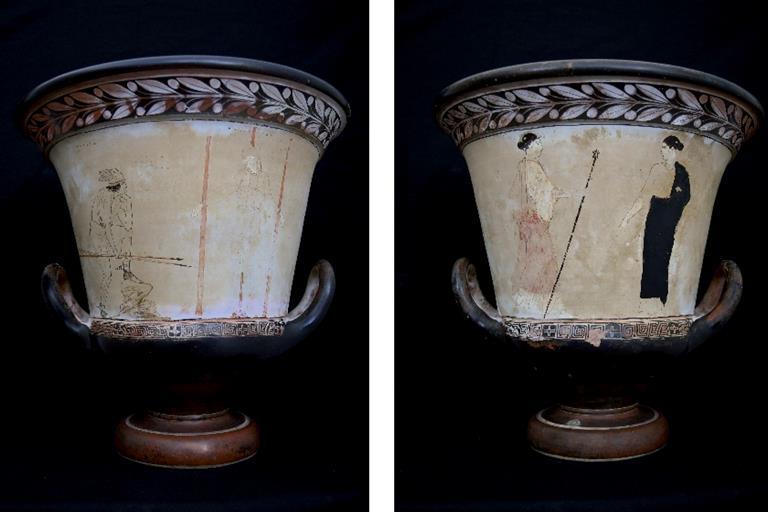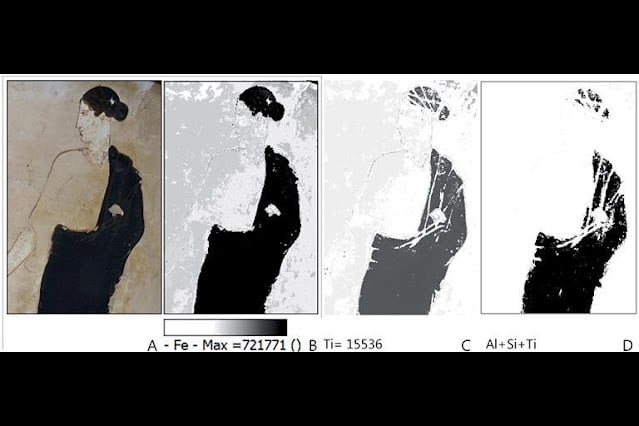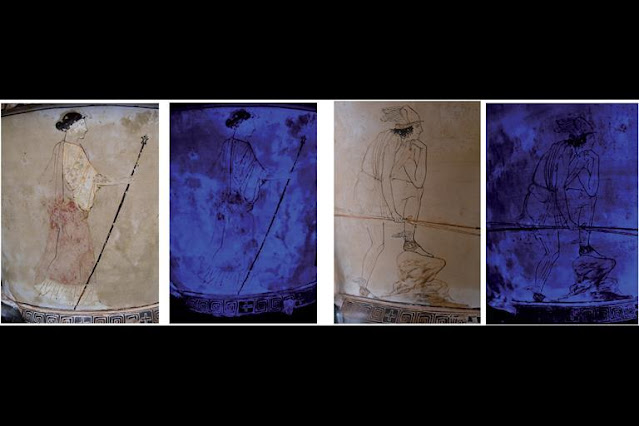
Researchers say that ancient Greek vases dating back to 450 to 440 BC used in the funeral rites of the elite most likely used gypsum in their distinctive white backgrounds.
Most kraters created in ancient Greece had red backgrounds, although many had dramatic black backgrounds as well on which figures depicted in white and red would be drawn and painted. Incredibly, little was known about the composition of the white slip used in white-background vessels, however, which were part of funeral rituals for the elite members of society.
Archaeometrics, also called archaeological science, is the use of physical, chemical, or mathematical procedures in the study of archaeological artifacts, materials, or data. Researchers use techniques such as radiometric dating, remote sensing, spectroscopy, and mathematical modeling in order to arrive at their conclusions.
Ancient Greek vases rarely seen with white backgrounds
Their studies of these unusual Attic vases confirms that the ancient Greeks did use gypsum, or calcium sulfate dihydrate, to decorate their kraters, giving them an ethereal, otherworldly quality that sets them apart from the black and red-background vases more commonly seen.

The Perseus Krater, which is owned by the Pietro Griffo archaeological museum in Agrigento, Italy, features exquisite artistry depicting Aphrodite and Perseus. The potter would have covered the whole surface of the krater with a runny coating of the gypsum, on which figures with vibrant hues would later be drawn and colored.
The krater depicts part of the myth of Perseus and Andromeda, in which the hero sets free the princess who has been tied to a monster.
A team of researchers from Italy’s University of Palermo employed x-ray fluorescence (XRF) and total reflection Fourier-transform infrared spectroscopy (TR-FTIR) in deducing the composition of the slip. Both visible and ultraviolet light was also used to look into the chemical properties of the decoration on the vases.

Below shows the composition of the figure of Cassiopeia using visible light that enhances the presence of iron, titanium and manganese (aluminum, silicates and titanium).
The researchers found that the x-ray florescence showed large amounts of calcium that was distributed over the whole surface of the vase. The three likely sources considered were calcium carbonate; kaolinite, a clay which is composed of hydrous aluminium silicates; and calcium sulfates (gypsum).
Using SmART_scan software using the data created by the x-ray images, the Palermo researchers produced “maps” that indicated the presence of both calcium and sulfur over the entire white background, showing that the artist used gypsum as the base for the white slip.

The TR-FTIR process ruled out the presence of kaolinite or calcium carbonate, heightening the probability that gypsum was indeed the substance used for the ethereal white pigment.
The researchers also discovered, via TR-FTIR of the painted figures, that the potter most likely used firing temperatures between 700 – 900°C, a finding that reinforced what most experts had believed to be true for Attic vases.
The Palermo University’s findings were published in the journal RSC Advances.
See all the latest news from Greece and the world at Greekreporter.com. Contact our newsroom to report an update or send your story, photos and videos. Follow GR on Google News and subscribe here to our daily email!



